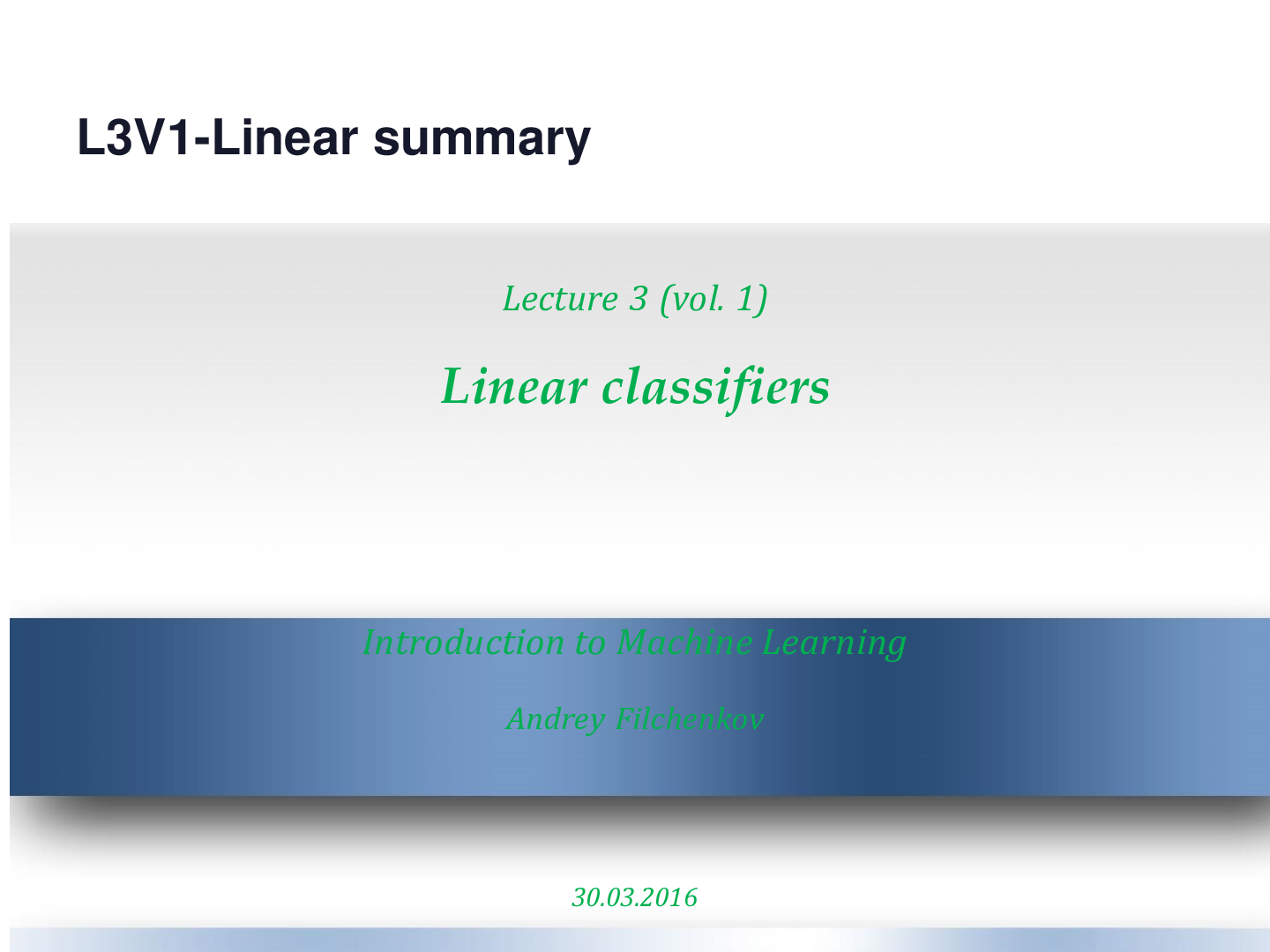Micro Biology > Summary > Summary C453 Clinical Microbiology Study Questions.docx Already Graded A+ (All)
Summary C453 Clinical Microbiology Study Questions.docx Already Graded A+
Document Content and Description Below
Microbiology Study Questions Module 1: Types of Microorganisms 1) Describe the basic characteristics of bacteria. a. Bacteria are small and come in many different shapes such as coccus, coccobacill... us, vibrio, bacillus, spirillum, spirochete. The cell walls of gram-positive and gram-negative and acid-fast consist of peptidoglycan and acid-fast bacteria where almost 60% of the wall is lipids. Gram-positive have teichoic acid in the wall as well for movement into and out of the wall for ions. Cell wall, cell membrane, ribosomes, cytoplasm, flagellum, pilus, capsule or slime layer, chromosomes. 2) Describe the components of the following cell walls, including the size of the peptidoglycan layer and fully describe any unique components of the cell wall: a. Gram positive- 60% peptidoglycan, teichoic acid b. Gram negative- 10%-20% of peptidoglycan, lipopolysaccharide c. Acid-fast- small amount of peptidoglycan, 60% lipids mycolic acid, waxes and glycolipids 3) What is an endotoxin? What are the effects of endotoxin? a. Endotoxins are a component of the exterior cell wall of gram-negative bacteria. They are Lipopolysaccharide and when the cell disintegrates these are released and can cause fevers and severe feelings of sickness. 4) Name examples of wall-deficient bacteria. How do they survive without a cell wall? a. Mycoplasma species and these bacteria can form when an antibiotic used is affect cell wall synthesis, most bacteria will die but some are left with no cell wall which can cause chronic or reoccurring diseases like crohn’s disease. They have strong cell membranes and usually live inside of other cells to have a balanced environment. They will die if exposed to high or low salt concentrations. 5) Describe the following bacterial shapes: a. Coccus- spherical b. Coccobacillus-short rod c. Vibrio- comma shaped d. Bacillus-rod e. Spirillum- rigid spiral structure f. Spirochete-corkscrew shaped 6) Describe the function of the following bacterial structures: a. Cell membrane-protects the cell from outside disturbances, also helps to facilitate movement into and out of the cell by transport mechanisms. (It is really good to know that Gram negative bacteria have an outer cell membrane while Gram positive bacteria do not. So, Gram negative bacteria have a cell membrane, a cell wall, and then an outer cell membrane. Gram positive bacteria have only a cell membrane and a cell wall, but that cell wall is very strong with a higher percentage of peptidoglycan and with teichoic acid.) b. Cell wall- maintains the characteristic shape of the cell, prevents the cell from bursting when fluids flow into the cell by osmosis c. Capsule- protect the cell from being eaten by phagocytes d. Pili- help the cell attach to other cells e. Flagella- helps to move the cell around f. Endospore- endospores are formed within the cell and can stay around through all kinds of environments and temperatures which can help to bring the bacteria back. g. Periplasmic space-gap between cell membrane and cell wall, very active area of cell metabolism, present mostly in gram negative bacteria, 7) How are capsules used to promote infection? a. They prevent phagocytosis so they are not engulfed and can still cause infection 8) How are pili used to promote infection? a. They help the bacteria nt get flushed by adhesion and helps them stick to cells and infect. 9) Describe positive and negative chemotaxis. a. Positive is movement towards the attractant, negative is the movement away from the repellent 10) Describe the process of sporulation, include both the vegetative and sporulation cycles. a. Stage 1- DNA replicates and extends into an axial filament, stage 2 Septum forms near one pole, separating forespore from mother cell and each gets a chromosome, stage 3 mother cell engulfs the forespore surrounding it with a second membrane, Stage 4 chromosomes of mother cell disintegrate, stage 5 forespore develops a cortex layer of peptidoglycan between original forespore membrane and the membrane from the mother cell, stage 6 dipicolinic acid is synthesized and calcium is incorporated into the spore coat, stage 7 mother cell releases spore. b. Vegetative state first activation, then germination proper then outgrowth. 11) Name the bacteria that produce spores. What diseases do they cause? (Module 6 will help with the diseases) a. Clostridium and bacillus which can cause tetanus, botulism, gangrene, pseudomembranous colitis 12) Describe the basic characteristics of protozoa. a. Single-celled eukaryotes which feed on organic matter such as other microorganisms or organic tissues and debris 13) What diseases are caused by protozoa? a. Malaria, toxoplasmosis, babesiosis, trichomoniasis, giardiasis 14) Describe the basic characteristics of a fungi. a. Eukaryotic, non vascular, both sexual and asexual, typically not motile, hyphae 15) Define hyphae. a. Threadlike elements of the mycelium 16) Define dimorphic. Which fungi are capable of dimorphism? a. They can switch between mold and yeast depending on the environment. Histoplasma capsulatum, Blastomyces dermatitidis 17) Describe the characteristics of the following fungal groups, include common names, replication, and example fungi: a. Zygomycota i. Bread molds, conjugation fungi, have complex mycelia composed of hyphae (lacking septa) with chitinous walls b. Ascomycota i. Sac fungi have chitin in their cell walls and produce no flagellated spores. With the exception of some yeasts, which do not form hyphae, the hyphae of sac fungi have septa with a central pore. c. Basidiomycota i. The club fungi include mushrooms, toadstools, rusts, and smuts. The rusts and smuts parasitize plants and cause significant crop damage. In addition to having hyphae aggregated to form mycelia, the club fungi have club-shaped sexual structures called basidia, from which the name Basidiomycota is derived. In a typical basidiomycete life cycle, sexual spores called basidiospores germinate to form septate mycelia, and cells of mycelia unite into dikaryotic forms. d. Deuteromycota i. The Fungi Imperfecti are called “imperfect” because no sexual stage has been observed in their life cycles. Without information on the sexual cycle, taxonomists cannot assign them to a taxonomic group. However, by their vegetative characteristics and the production of asexual spores, most of these fungi seem to belong with the sac fungi. 18) Describe helminths. a. Worms are bilaterally symmetrical—that is, they have left and right halves that are mirror images. A helminth also has a head and tail end, and its tissues are differentiated into three distinct tissue layers: ectoderm, mesoderm, and endoderm. Helminths that parasitize humans include flatworms and roundworms 19) Describe the basic characteristics of a virus. a. Viruses can replicate only by infecting a host cell. They cannot reproduce on their own. Viruses are not cells; they are a strand of genetic material within a protective protein coat called a capsid. They infect a wide variety of organisms, including both eukaryotes and prokaryotes 20) Differentiate naked and enveloped viruses. How do enveloped viruses gain their envelope? a. Enveloped virus enclosed within a lipid membrane and is sensitive to heat, nonenveloped virus lacks a bilayer lipid membrane and is heat resistant. Envelopes are typically derived from portions of the host cell membranes but include some viral glycoproteins. 21) Describe the characteristic of the following viral groups, including families that belong in these groups: Positive sense single-stranded RNA viruses Envelope/capsid shape Infection or Disease Picornvirdae ( 1 copy) Naked, polyhedral Polio Common Cold Hepatitis A Togaviridae ( 1 copy) Enveloped, polyhedral Rubella Equine encephalitis Flaviviridae (1 copy) Enveloped, polyhedral Yellow fever Retroviridae ( 2 copies) Enveloped, spherical Adult leukemia Tumors AIDS Negative sense single-stranded RNA viruses Envelope/capsid shape Infection or Disease Paramyxoviridae ( 1 copy) Enveloped, helical Measles Rhabdoviridae ( 1 copy) Enveloped, helical Rabies Orthomyxoviridae ( 1 cipy in 8 segments) Enveloped, helical Influenza A & B Filoviridae ( 1 copy) Enveloped, filamentous Marburg Ebola Bunyaviridae ( 1 copy in 3 segments) Enveloped, spherical Respiratory distress Hemorrhagic fevers Double-stranded RNA viruses Envelope/capsid shape Infection or Disease Reoviridae ( 1 copy in 10-12 segments) Naked, polyhedral Rota virus Double-stranded DNA viruses Envelope/capsid shape Infection or Disease Adenoviridae (linear DNA) Naked, Polyhedral Respiratory infections Herpesviridae (linear DNA) Enveloped, polyhedral Oral and genital herpes Chickenpox, shingles Poxviridae (linear DNA) Enveloped, complex shape Smallpox, cowpox Papovaviridae (circular DNA) Naked, polyhedral Warts cervical and penile cancers Hepadnaviridae Enveloped, polyhedral Hepatitis B Single-stranded DNA viruses Envelope/capsid shape Infection or Disease Parvoviridae (linear DNA) Naked, polyhedral Fifth disease (erythema infectiosum) in children a. Positive sense single-stranded RNA viruses i. A positive-sense single-stranded RNA virus is a virus that uses positive sense, single-stranded RNA as its genetic material. Single stranded RNA viruses are classified as positive or negative depending on the sense or polarity of the RNA. b. Negative sense single-stranded RNA viruses i. Negative-sense RNA (like DNA) has a nucleotide sequence complementary to the mRNA that it encodes. Like DNA, this RNA cannot be translated into protein directly. Instead, it must first be transcribed into a positive-sense RNA that acts as an mRNA. c. Double-stranded RNA viruses i. The capsid consists of three concentric layers of protein, inside of which is the dsRNA genome, which range from approximately 670 to 3300 base pairs in length d. Double-stranded DNA viruses i. Single-stranded DNA is usually expanded to double-stranded in infected cells. Although Group VII viruses such as hepatitis B contain a DNA genome, they are not considered DNA viruses according to the Baltimore classification, but rather reverse transcribing viruses because they replicate through an RNA intermediate. ii. Herpes or the common cold e. Single-stranded DNA viruses i. A DNA virus is a virus that has DNA as its genetic material and replicates using a DNA-dependent DNA polymerase. The nucleic acid is usually double-stranded DNA but may also be single-stranded DNA 22) Which viral group (and family) produces reverse transcriptase? a. Group VI viruses. All members of Group VI use virally encoded reverse transcriptase, an RNA-dependent DNA polymerase, to produce DNA from the initial virion RNA genome. Module 3: The Case of a Cat-Lover’s Good Deed 1) Please address the following aspects of Innate Immunity. a. List several examples of physical barriers a host has against pathogenic microorganisms. i. Skin and mucous membranes which make the surfaces hard to penetrate and inhospitable to pathogens. b. List several examples of chemical barriers a host has against pathogenic microorganisms. i. Body fluids, saliva, mucus, gastric juices and iron limitation mechanisms c. Define and state the function of interferon. i. Several related proteins that are produced by the bodies cells as a defensive response to viruses. Inhibit cell division, combat bacterial and parasitic infections and promote or impede the differentiation of cells. d. What causes fever and why is it beneficial? i. The destruction of bacteria that release endotoxins and it helps the bodies immune system get to the infection site fast e. Discuss the general functions of the complement system i. 20 large regulatory proteins that play a role in a host defense. The effects are nonspecific but can be activated by immune reactions. Enhances phagocytosis, lyse microorganisms, bacteria and enveloped viruses directly, generates peptide fragments that regulate inflammation and immune responses. f. Briefly describe each of the three complement pathways i. Classical 1. Antibodies bind to antigens such as microbes and involves complement proteins C1, C4, C2 ii. Lectin 1. Macrophages complete phagocytosis, releasing cytokines that cause the liver to produce lectin proteins, bind to carbohydrates found on bacteria and viruses iii. Alternative (properdin) [Show More]
Last updated: 1 year ago
Preview 1 out of 22 pages
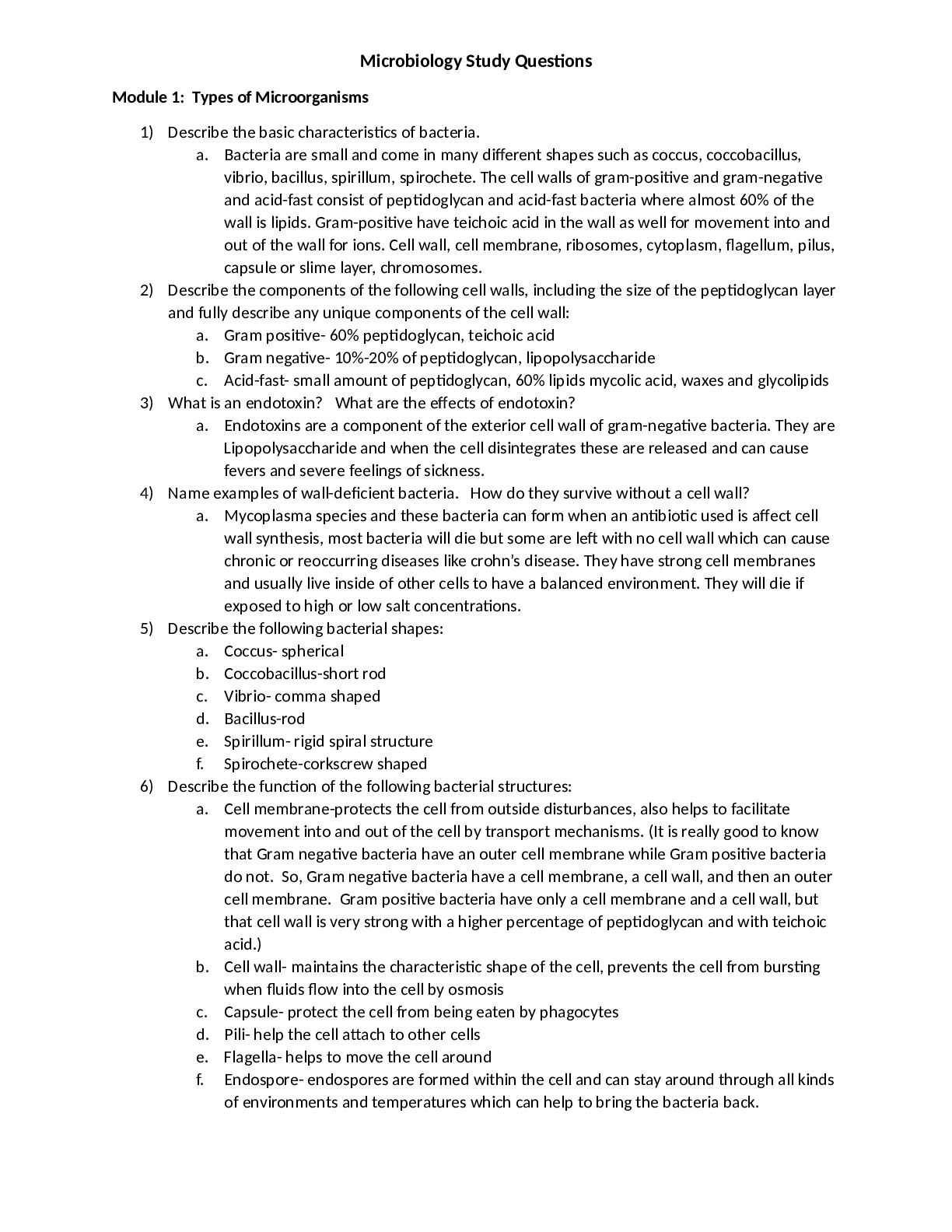
Reviews( 0 )
Document information
Connected school, study & course
About the document
Uploaded On
Sep 13, 2021
Number of pages
22
Written in
Additional information
This document has been written for:
Uploaded
Sep 13, 2021
Downloads
0
Views
61








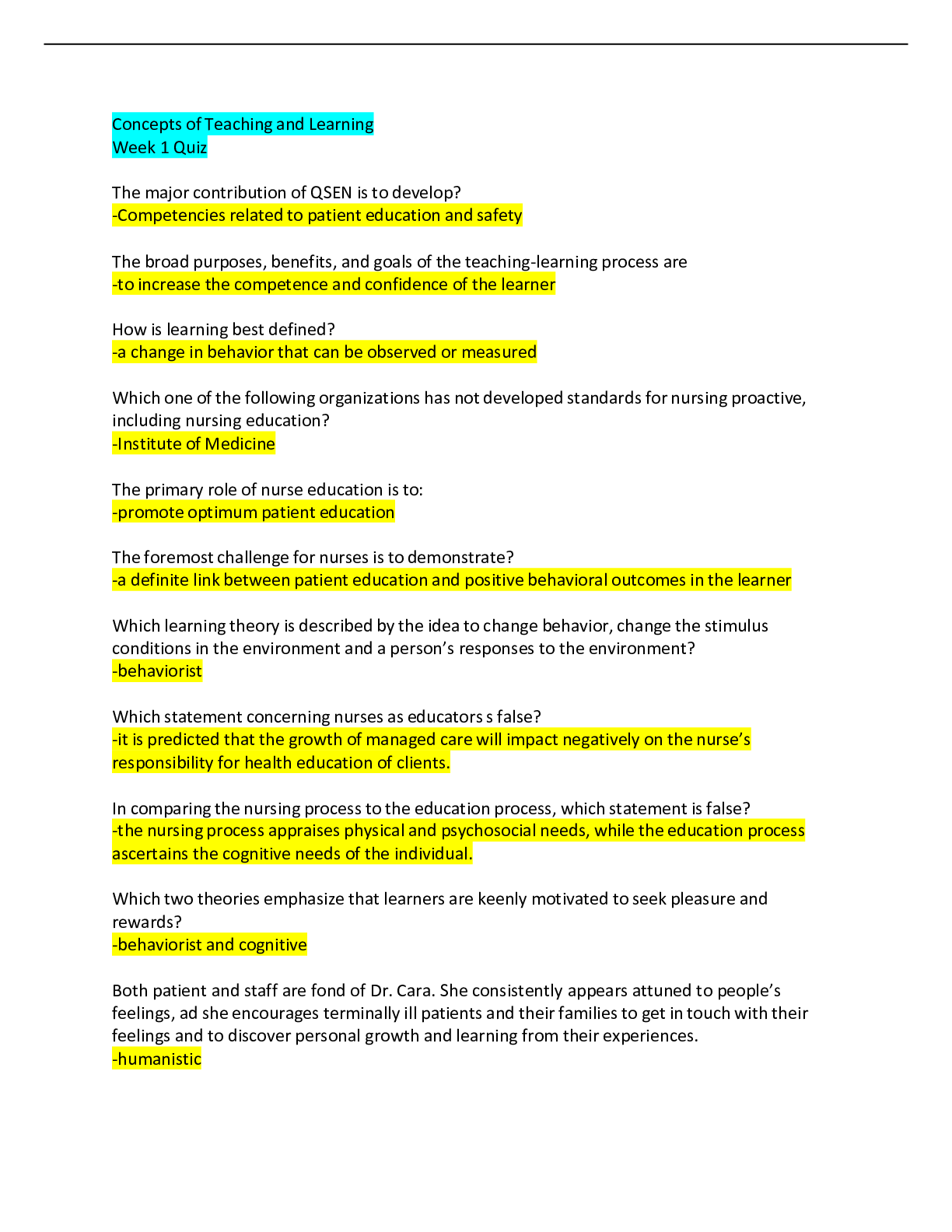









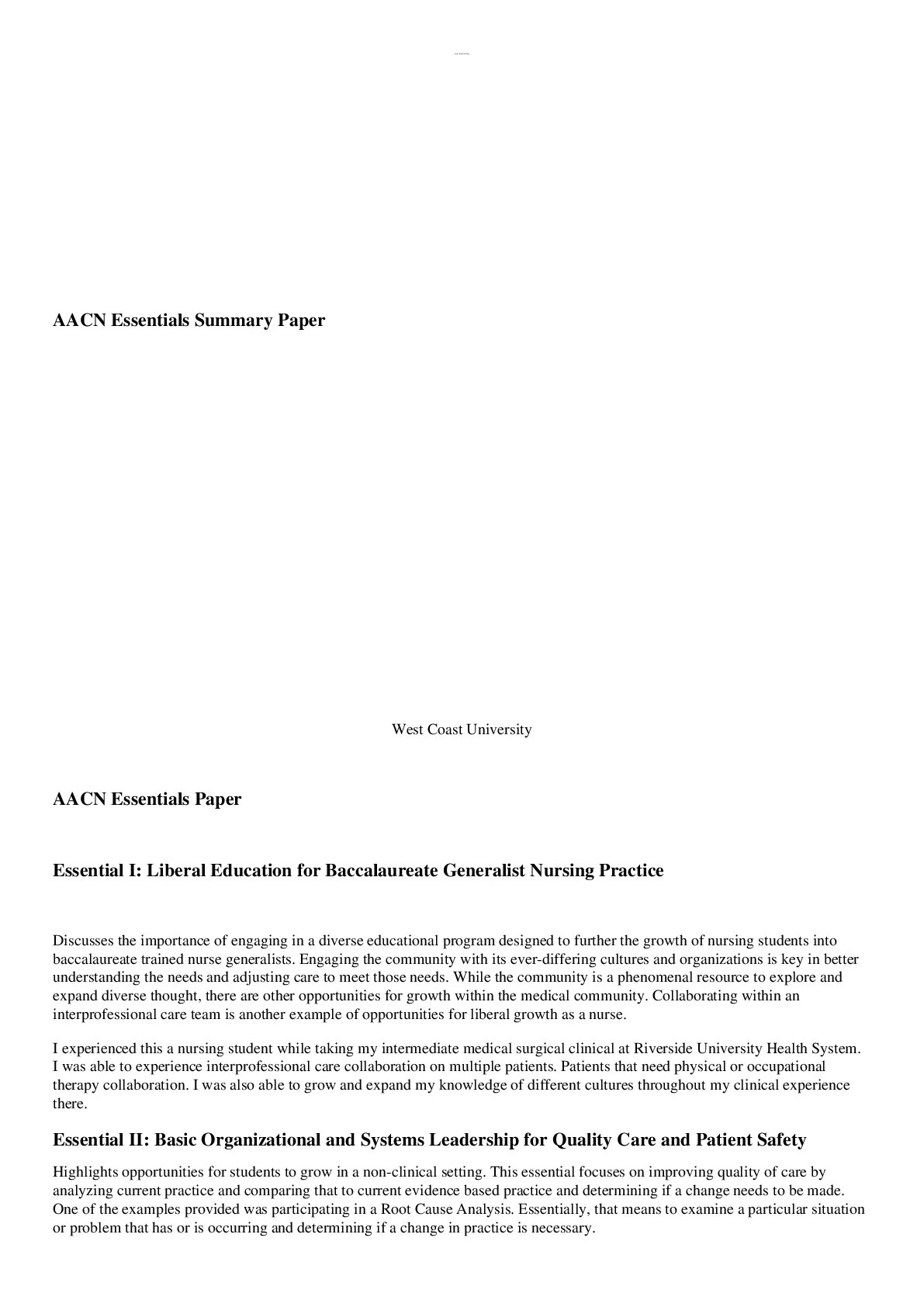



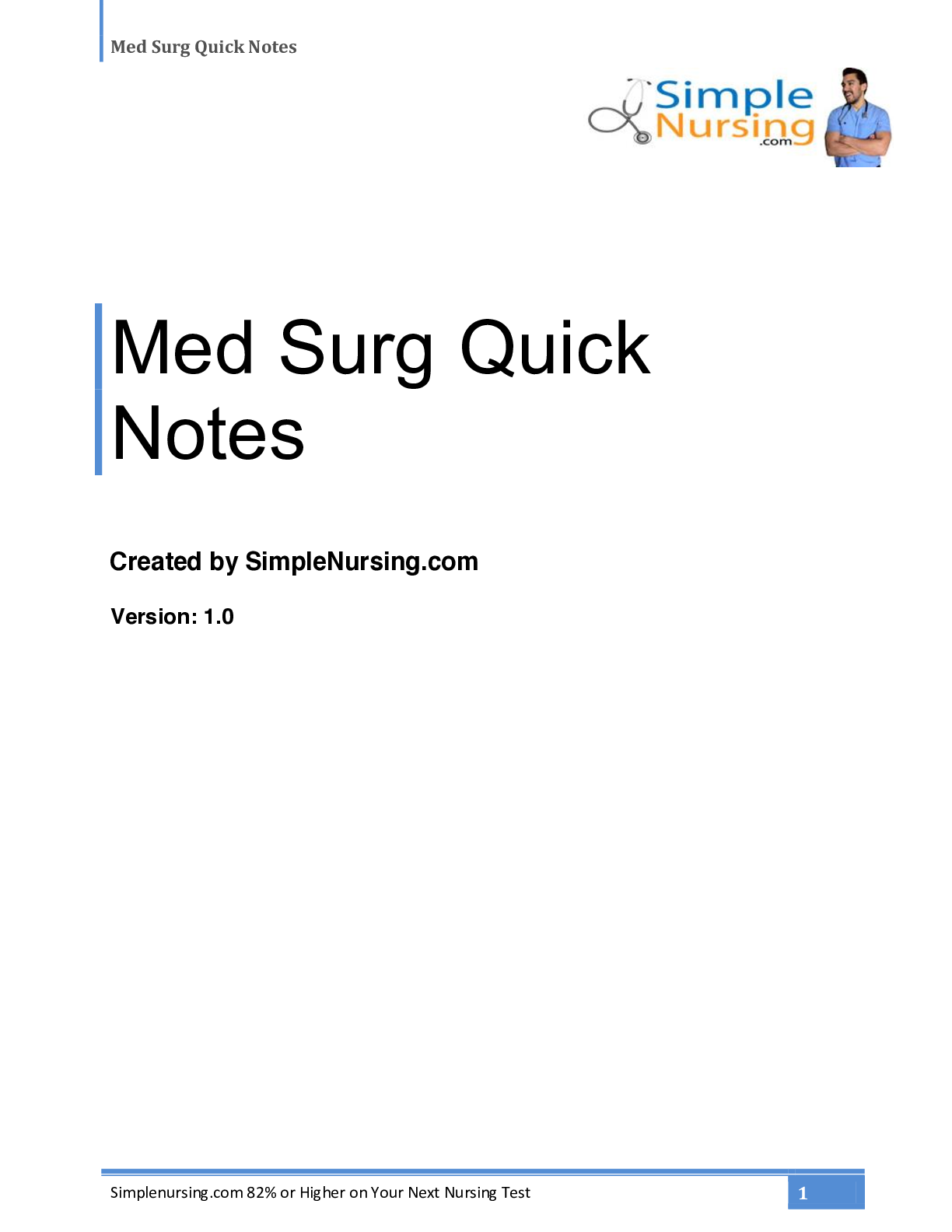
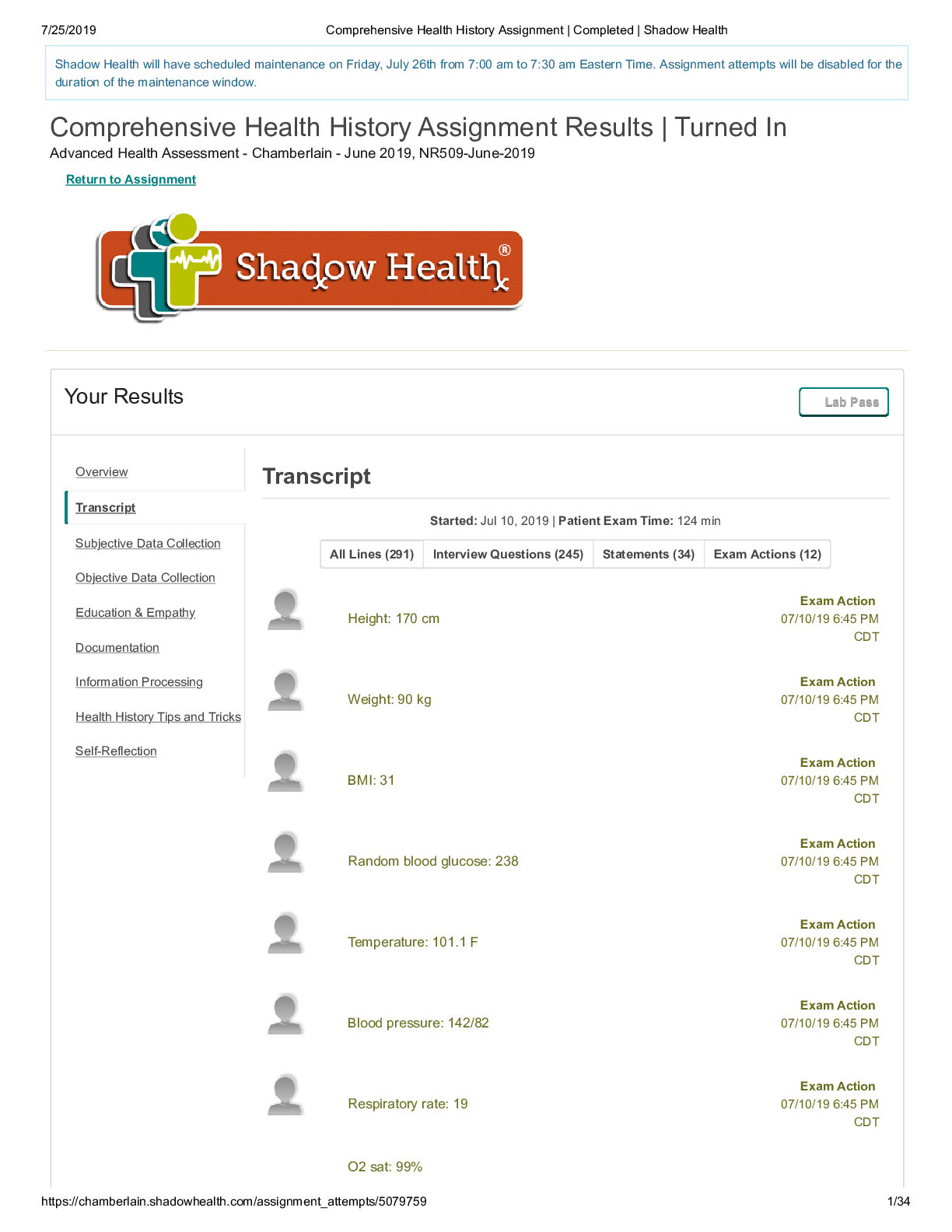
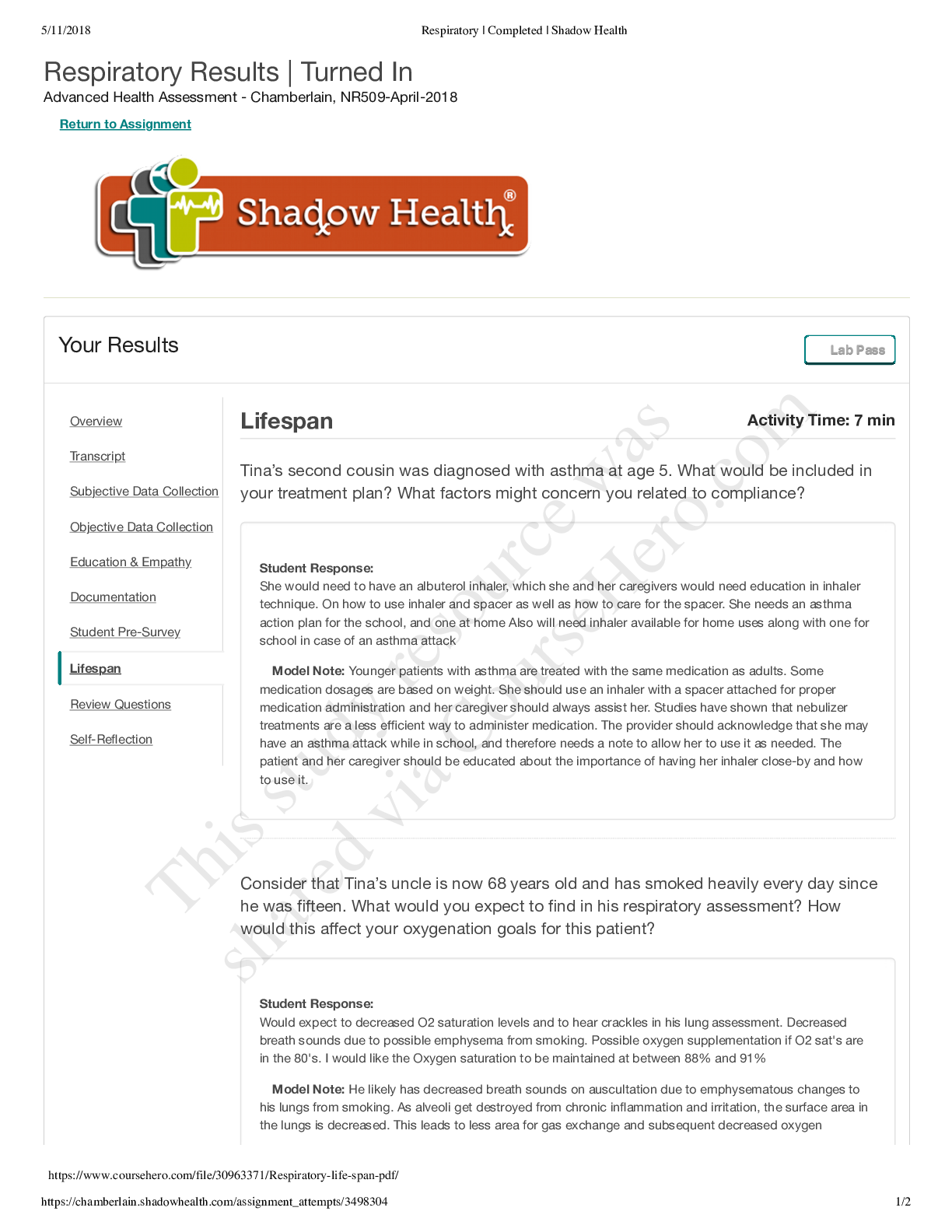


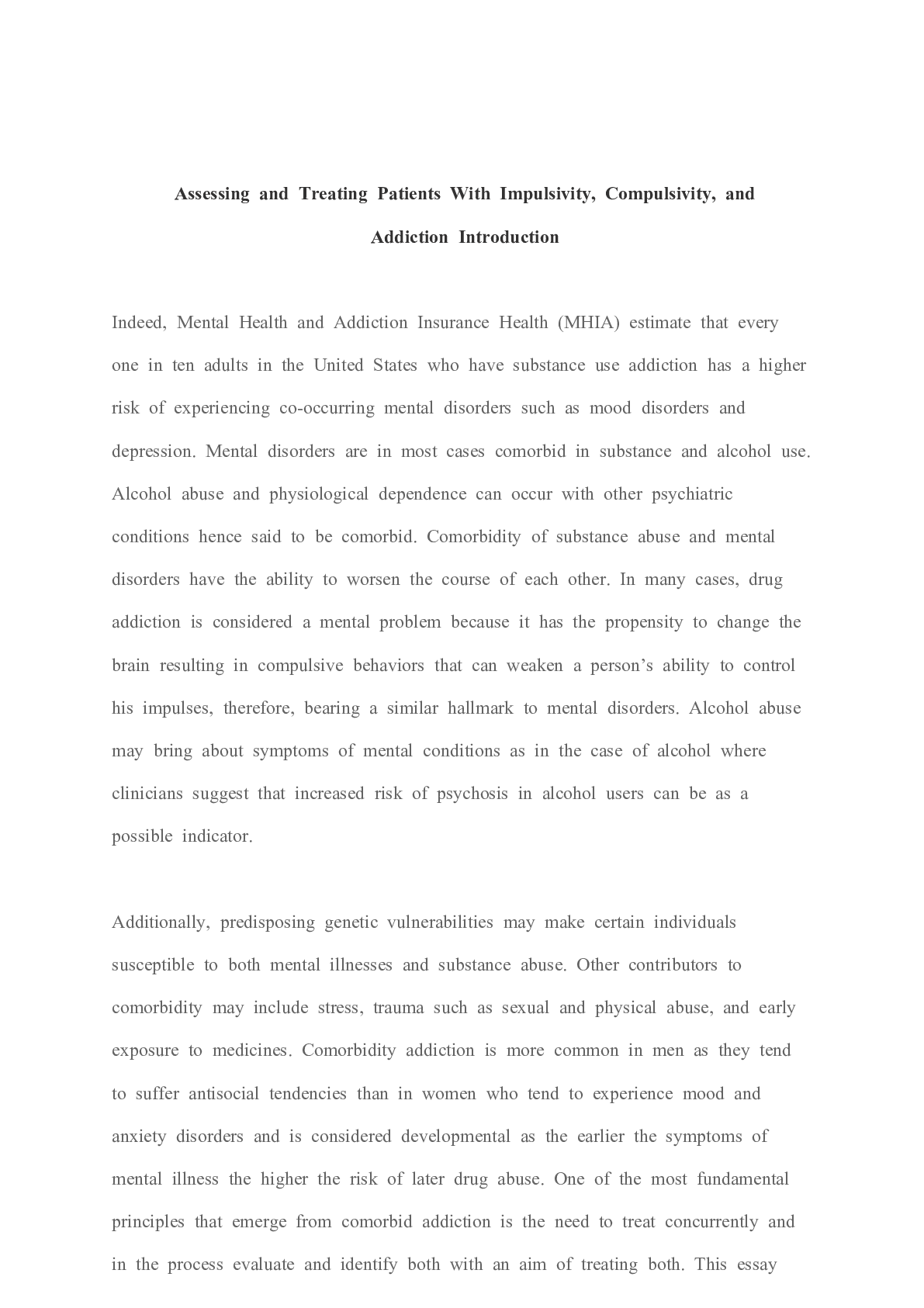



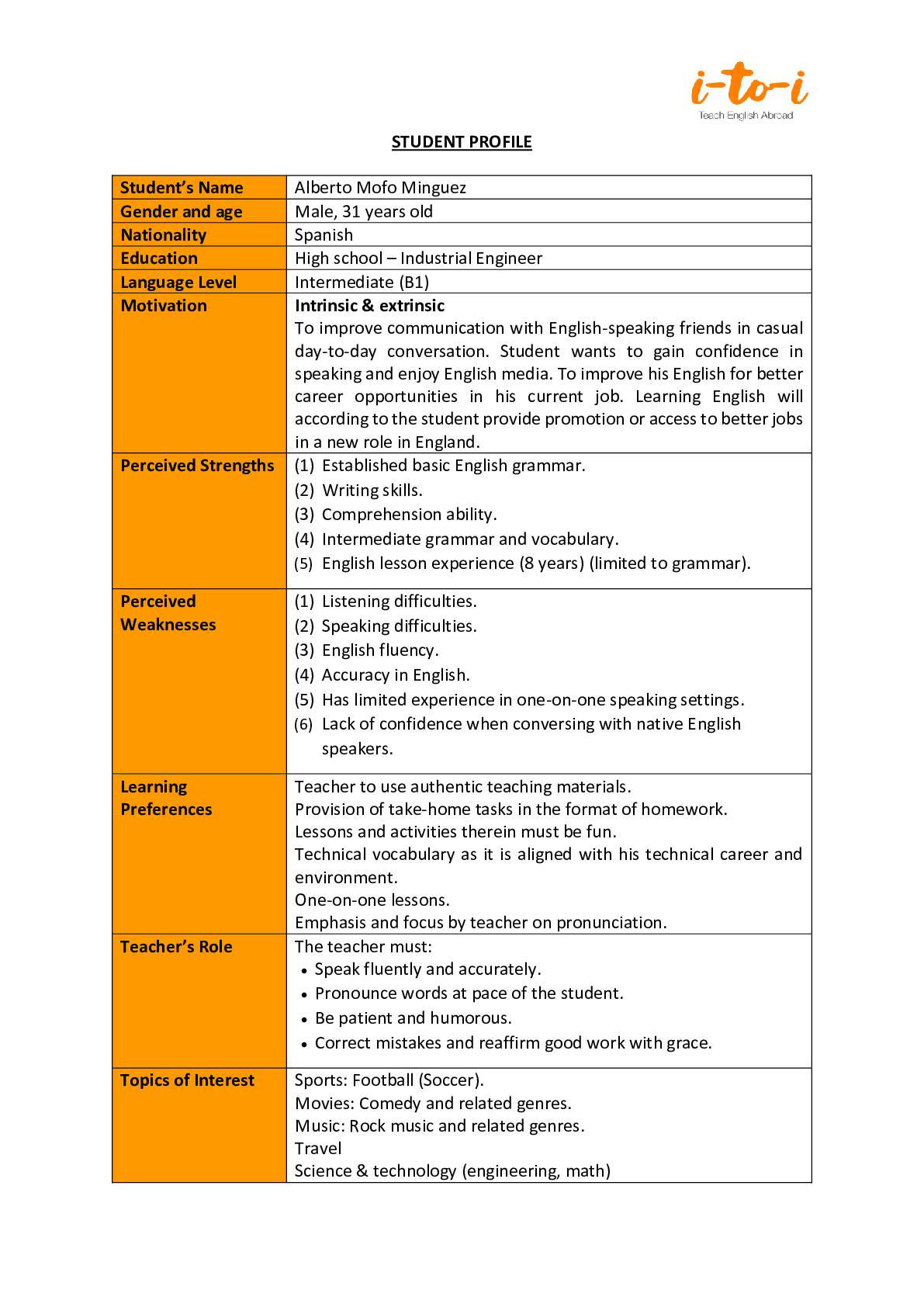
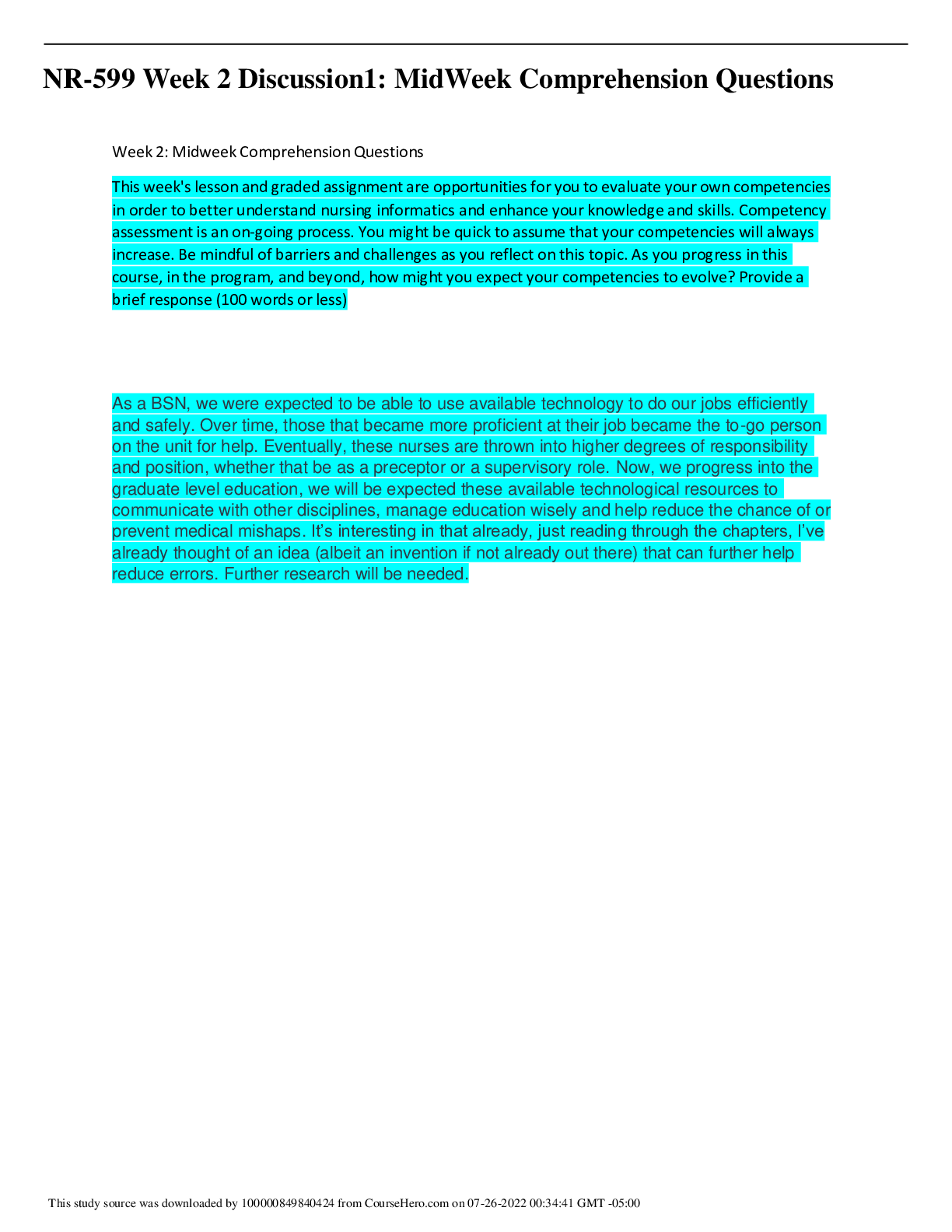

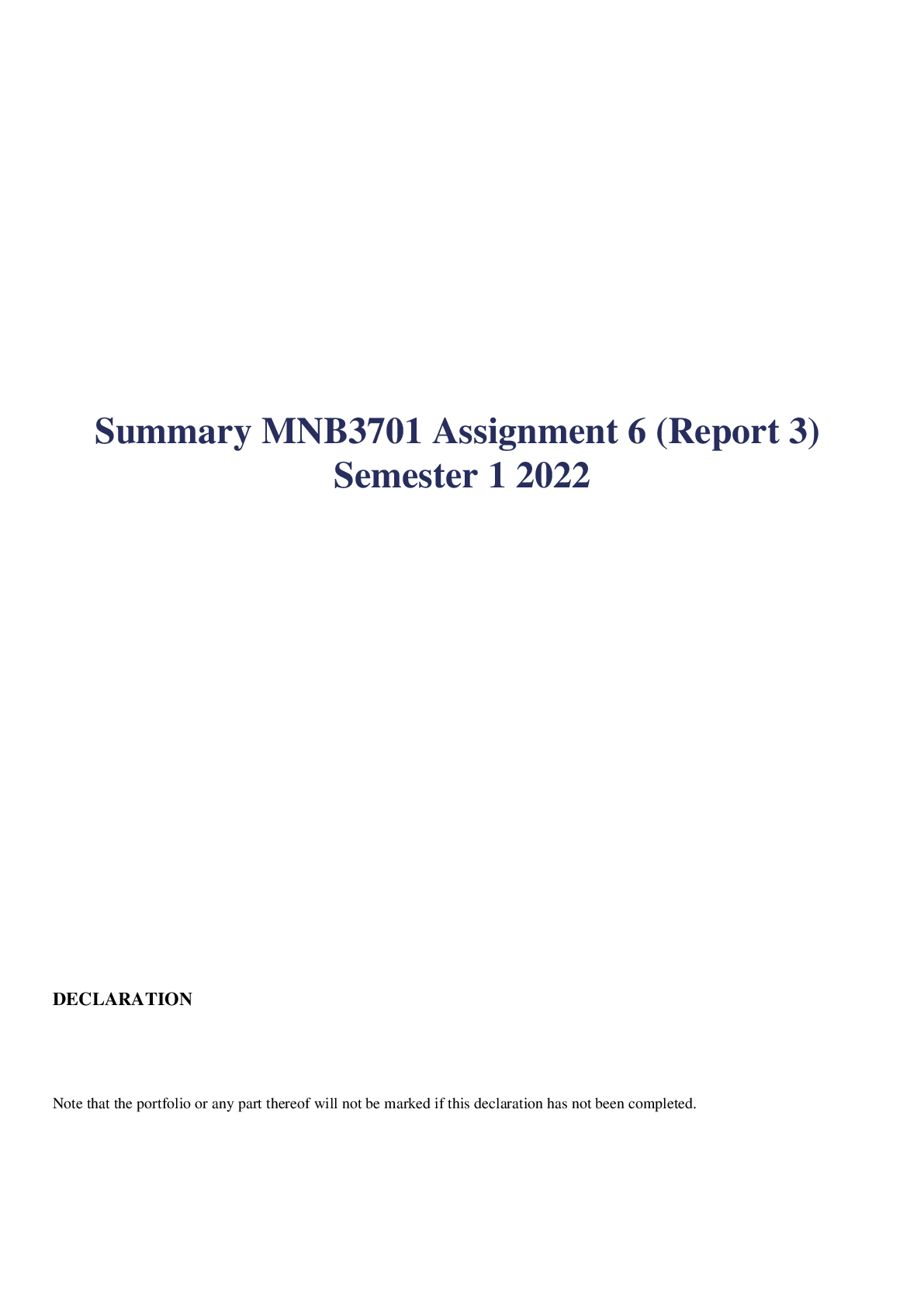
.png)
